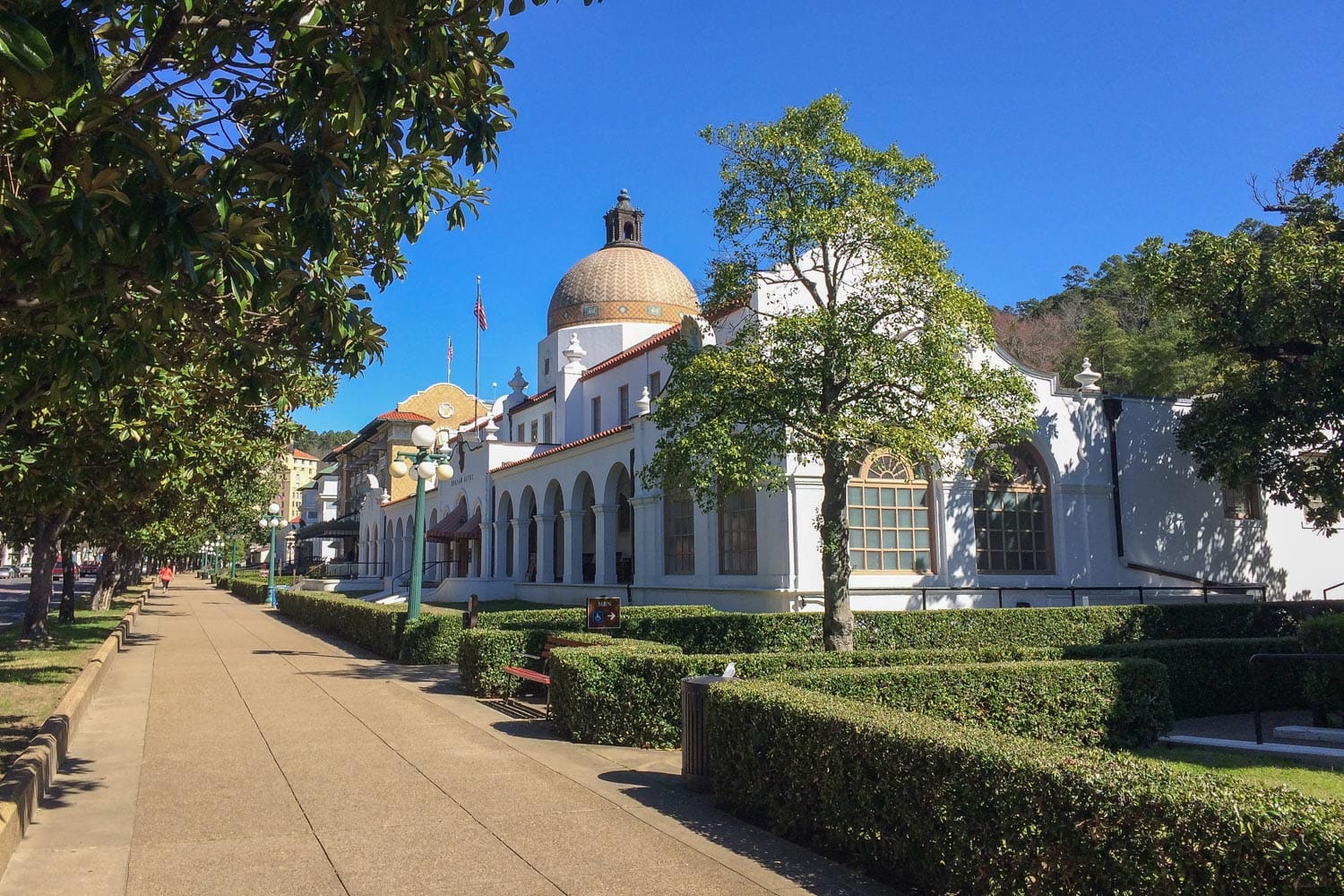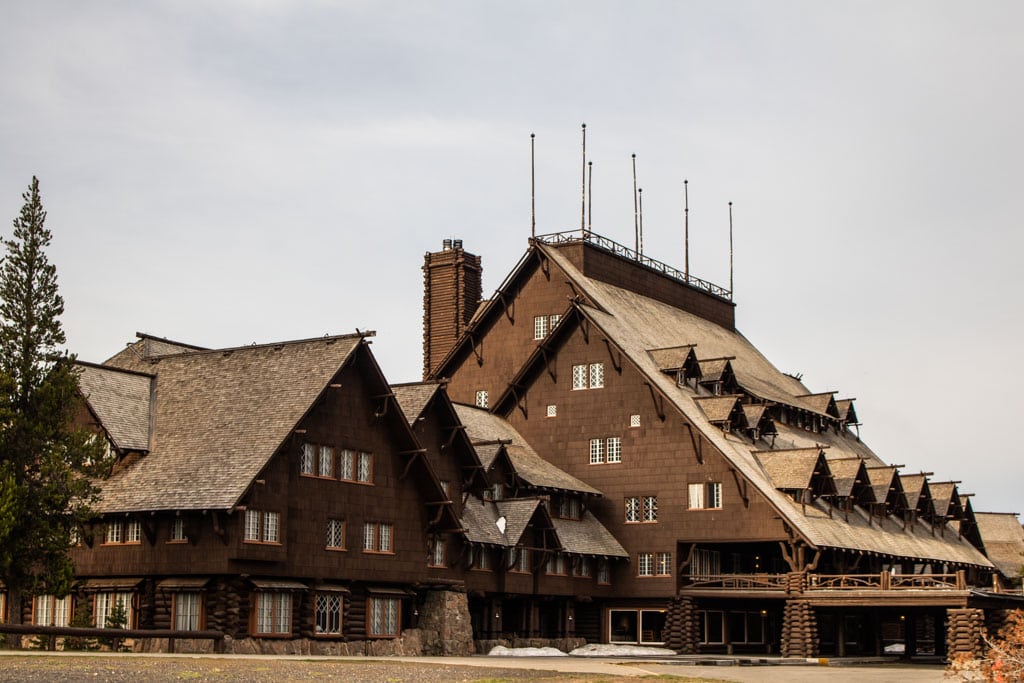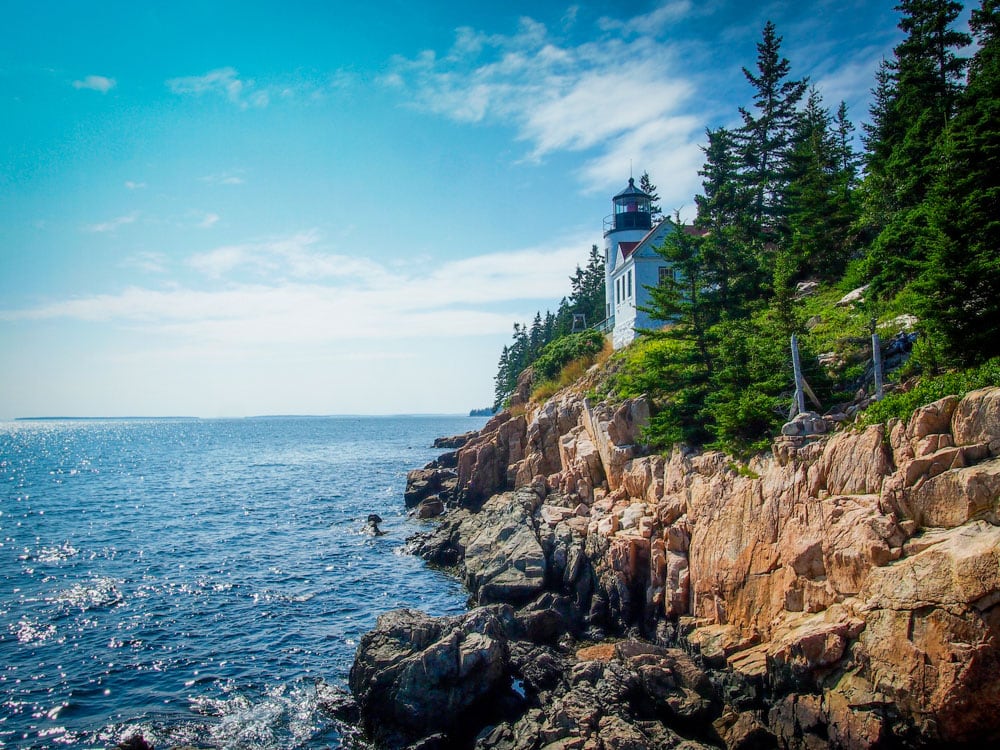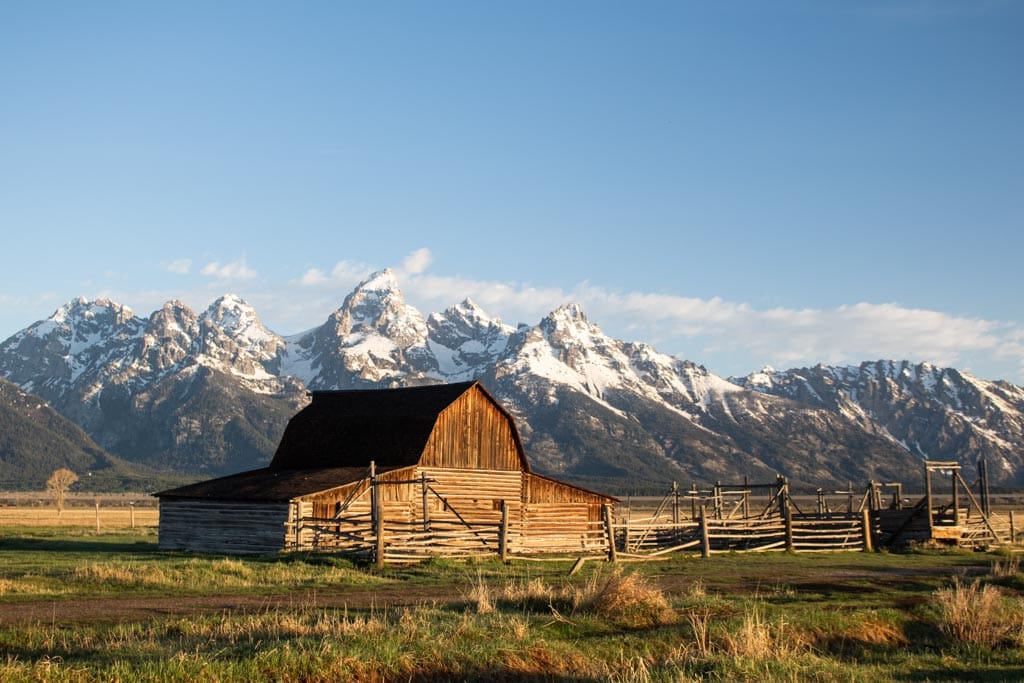Top 12 Most Photogenic Buildings in National Parks
With their mesmerizing natural beauty and abundant wildlife, America’s national parks aren’t exactly the dream destinations of architecture lovers.
At least, that’s what they think. The truth is that you can find beautiful architecture and photogenic buildings in national parks all over the U.S.
In fact, the national parks of the U.S. boast their very own architectural style, known officially as “National Park Service Rustic” and unofficially as “parkitecture”.
This unique style of national parks architecture developed in the early- and mid-1900’s, the result of an effort by the National Park Service to construct buildings in national parks that didn’t conflict with the natural environment. Harmony was the key word.
These parkitecture buildings, including inns, lodges and visitor centers, were made with native wood and stone. Care was taken to design them to reflect the appropriate Native American architectural styles that were already present in the area.
Lots of these national parks buildings are now on the National Register of Historic Places.
This national parks buildings post contains affiliate links. You can read more about our Terms of Use / Disclosure here.
12 Most Photogenic Buildings in National Parks of America
Before we move on, let me just say that not all of the following beautiful buildings in national parks feature that parkitecture style. About half of them do. The other structures are younger or older and/or have an entirely different style and purpose.
There’s gorgeous lodges and hotels, but also a lighthouse, a watchtower, a couple of picturesque barns and world-class ruins.
12. Bathhouse Row in Hot Springs National Park, Arkansas

Bathhouse Row, Hot Springs National Park
One of the oldest U.S. national parks, Hot Springs is also one of just two urban national parks. As its name indicates, the main feature of this western Arkansas national park is its numerous natural hot springs.
Native Americans had been coming here to enjoy the springs’ healing and soothing waters, but modern development in the town of Hot Springs didn’t start until the mid-1800’s, after the American government had set the area aside of as the nation’s very first federal park in 1832.
After that, bathhouses began popping up all along Hot Springs Creek.
The current buildings on Bathhouse Row in Hot Springs National Park date from the turn of the 20th century. An eclectic collection of historic bathhouses, they have various different architectural styles, from Italianate and Spanish to Neoclassical and Renaissance-revival.
Four of the eight bathhouses on Bathhouse Row are now open to the public. Both Quapaw and Buckstaff are still in operation as spas and bathhouses, while the Fordyce building serves as the Hot Springs National Park Visitor Center and Museum.
The Superior building, on the other hand, houses a brewery, the only brewery in the world that brews beer with hot spring water.
- More information: Bathhouse Row
11. Old Faithful Inn in Yellowstone National Park, Wyoming

Old Faithful Inn, Yellowstone National Park
Offering a superb view of Old Faithful, one of Yellowstone National Park’s most famous attractions, the Old Faithful Inn is a prime example of National Park Service Rustic, or “parkitecture.”
Constructed during the winter of 1903-1904, it was the very first of the West’s grand park lodges. It still remains one of the greatest historic lodges in the national parks.
Its building materials are mainly lodgepole pine and rhyolite stone, all sourced locally. It’s the world’s largest log hotel, which in itself is a great reason to visit. The lobby alone is 92 feet (28 meters) and seven stories high.
The enormous stone chimney is hard to miss, while its sharp triangular roofs and dormers reflect the surrounding mountain summits. Additionally, the views of Old Faithful, one of the top attractions in Yellowstone, from its balcony are fantastic.
- More information: Old Faithful Inn
10. Crater Lake Lodge in Crater Lake National Park, Oregon

Crater Lake Lodge, Crater Lake National Park – Photo credit: Xanterra Parks & Resorts
Set on the southwestern rim of the Crater Lake caldera and one of the park’s top attractions, Crater Lake Lodge overlooks this extraordinary lake, located a thousand feet (300 meters) below.
The lodge dates from 1915, from its very opening attracting visitors even despite its lack of facilities. The stunning view of the lake below was enough to draw in a steady stream of tourists, a vista that keeps on dazzling visitors to this day.
Nowadays, however, the lodge does have all modern hotel amenities you can think of, while still offering a classic 1920’s atmosphere and charming interior. Additionally, it’s a great place to have dinner and spend the night after an elopement or wedding ceremony, too.
Because of the high amount of snowfall in Crater Lake National Park, which makes it one of the best national parks for snowshoeing, the lodge is only open from late-May to mid-October.
- More information: Crater Lake Lodge
9. The Ahwahnee in Yosemite National Park, California
Historically, Yosemite National Park has always had its fair share of beautiful buildings. While some of them didn’t stand the test of time, many are still around.
The styles, designs and materials used in those old buildings were combined in 1927, with the construction of the awe-inspiring Ahwahnee Hotel in Yosemite Valley.
Gilbert Stanley Underwood, a leading parkitecture architect who also drew up lodges in Zion National Park, Bryce Canyon National Park and Grand Canyon National Park, designed the hotel, making it one of the greatest and grandest examples of National Park Service Rustic.
- More information: The Ahwahnee
8. Painted Desert Inn in Petrified Forest National Park, Arizona

Painted Desert Inn, Petrified Forest National Park
As you can expect from fascinating Petrified Forest National Park, this building was originally constructed with petrified wood.
Over time, though, the Painted Desert Inn has undergone several changes in its lifetime. While that original building was erected in the 1920’s, the current adobe design dates from the 1930’s.
Just because of that gorgeous adobe style, this building is a unique interpretation of National Park Service Rustic.
Unlike the log-and-stone lodges in the Northwest, many of the Southwest’s buildings feature a distinct Puebloan Revival Style, recreating and honoring the typical architecture of the Puebloans.
Overlooking the spectacular Painted Desert, one of the park’s star attractions, near scenic Kachina Point, the Painted Desert Inn exhibits that particular style beautifully. Although it was previously a place where people could actually stay, it now serves as a museum.
- More information: Painted Desert Inn
7. Desert View Watchtower in Grand Canyon National Park, Arizona
Designed by architect Mary Colter, who was also the creative force behind other such structures on the Grand Canyon’s South Rim as Lookout Studio and Hermit’s Rest, the Desert View Watchtower overlooks one of the world’s most sensational landscapes.
Desert View, which lies about 25 miles (41 kilometers) to the east of Grand Canyon Village, offers visitors entering the park at the East Entrance their first view of the canyon.
You can enter and climb the watchtower for even better views of the Colorado River and the Grand Canyon. It’s truly one of the best views you’ll have along the entire South Rim.
- More information: Desert View Watchtower
6. Bass Harbor Head Light Station in Acadia National Park, Maine

Bass Harbor Head Light, Acadia National Park
The only lighthouse on Mount Desert Island and one of the major attractions in Acadia National Park, Bass Harbor Head Light Station’s origins date back to 1855, when U.S. Congress determined that the construction of a lighthouse was appropriate and could literally save lives.
The historic lightkeeper’s house is still present, but is now the home of a member of the Coast Guard and his family.
Therefore, the building itself is not open to the public. You can, however, see it up close from a paved walking trail in the southwestern part of Acadia National Park.
If you take the stairs down to the rocky beach, the view gets even better. It’s a fine view any time of day, but absolutely stunning at sunset.
- More information: Bass Harbor Head Light Station
5. Paradise Inn in Mount Rainier National Park, Washington

Paradise Inn, Mount Rainier National Park
The fifth-oldest national park in the United States, Mount Rainier National Park was the very first one that had a master plan behind its design. Its initial lack of human settlement in combination with that master plan made it a fantastic area for parkitecture development.
Nowadays, the park has four distinct historic areas—Sunrise, Paradise, Longmire and Ohanapecosh—which all boast the National Park Service Rustic architecture style.
The park’s best example of the style is the Paradise Inn, a large hotel designed to weather and withstand the harsh winters of the North Cascades. Observant of the native-materials policy, the hotel was built partially with the remains of a forest fire. It makes for a great day trip destination from Portland or Seattle.
- More information: Paradise Inn
4. Many Glacier Hotel in Glacier National Park, Montana

Many Glacier Hotel, Glacier National Park
Yet another gorgeous parkitecture building, and the last one in this list of beautiful buildings in national parks, is Many Glacier Hotel in Glacier National Park. Built on the shore of shimmering Swiftcurrent Lake, this Swiss-style lodge is one of the best places to stay in Glacier.
Construction began in 1914, ending merely a year later in 1915. Constructed to make Glacier National Park a tourist destination, to promote this region as the “American Alps”, the hotel definitely fulfilled its initial purpose.
One of the driving forces behind its establishment and construction was Louis W. Hill, the president of the Great Northern Railway.
The Many Glacier Hotel and Glacier Park Lodge, which is in East Glacier, just outside the park’s boundaries, served as the focal points of tourism, while smaller backcountry chalets and campgrounds offered a more intimate nature experience. From the Many Glacier Hotel, you can do some of the top hikes in Glacier National Park.
- More information: Many Glacier Hotel
3. Gifford Homestead Barn in Capitol Reef National Park, Utah

Gifford Homestead, Capitol Reef National Park
Part of the former home of the Gifford family in the Mormon village of Fruita, the Gifford Homestead Barn is one of the most photogenic buildings in national parks, by far.
Its setting amid lush cherry, peach and apple orchards, and backed by towering red cliffs is extraordinary. It’s truly unlike anything else in any other American national park. Located in south-central Utah, Capitol Reef National Park itself is, by the way, exceptionally photogenic as well.
The Gifford Homestead, inhabited from 1928 to 1969, consisted of several buildings, including a farmhouse, smokehouse, pasture, garden and the barn. Stone walls surrounded or separated these different areas.
Nowadays, a part of the historic house is open to the public. There’s a nice little store selling such things as jams, jellies and fruit pies, handcrafted utensils, candles and quilts.
After a hike in Capitol Reef National Park, nothing’s better than a fresh apple pie with vanilla ice cream!
- More information: Gifford Homestead
2. Cliff Palace in Mesa Verde National Park, Colorado

Cliff Palace, Mesa Verde National Park
The largest cliff dwelling in North America, Cliff Palace is one of the hundreds of cliffs dwellings in Colorado’s UNESCO World Heritage-listed Mesa Verde National Park.
It’s one of the park’s main attractions, a grandiose collection of brick and stone constructions and homes, chiseled and stacked in a vertical cliff.
The heyday of cliff-dwelling building in the region was sometime from the late-12th century to the mid-13th century. The Ancestral Puebloans, who built dwellings and villages all over the Colorado Plateau, abandoned Cliff Palace and the other dwellings in Mesa Verde 1300s, leaving behind only ruins.
This magnificent structure is among the greatest buildings in national parks anywhere in the United States, a spectacularly well-preserved example of Ancestral Puebloan architecture.
- More information: Cliff Palace
1. Moulton Barn in Grand Teton National Park, Wyoming

John Moulton Barn, Grand Teton National Park
Parts of what is now Grand Teton National Park used to be the home of Mormon pioneers, who were sent there from Salt Lake City to found new villages in the late 1800’s. One of those Mormon communities was Grovont, now known as “Mormon Row”.
Although more than two dozen homesteads were established in the area, the vast majority of them are long gone. Some of them, however, remain.
Now, two main homesteads survive on Mormon Row: the Chambers Homestead and the two almost impossibly photogenic Moulton Barns.
The latter are among the most photographed and famous buildings in national parks in America, set breathtakingly in front of the towering Grand Tetons. One of the top places to visit in Grand Teton, it is especially beautiful at sunrise.
- More information: Mormon Row
So, if you’d like to see or photograph some of the most photogenic buildings in national parks in the United States, you now know where to find them!
If there is any structure or man-made feature that you think is missing from this list, do let us know in the comments below.
Other National Park Attractions & Activities
- Best National Parks for Waterfalls
- Best National Parks for Wildflowers
- Scenic Drives in America’s National Parks
- Best National Parks to Visit in Summer
- Best National Parks to Visit in Spring
- Top National Parks for Road Cycling
- Top National Parks for Wildlife Watching
- National Parks With Volcanoes in America
- Best National Parks for Star Viewing
- Best National Parks to Visit in Winter
- Top National Parks to See the Aurora Borealis
- Most Pet-Friendly National Parks
- National Parks That Preserve Native American Heritage Sites






